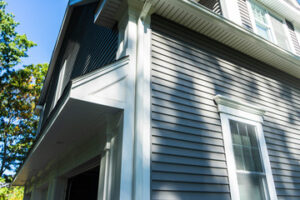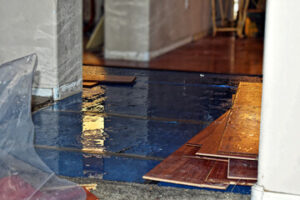Poker is a game that requires skill to win. You need to study the game and make smart decisions. Moreover, you need to know how to read your opponents. In addition, you must avoid short term madness like bad beats and coolers.

Math is at the center of modern poker. However, some players ignore this and play based on their gut feeling instead of the numbers. Visit https://www.pokertalk.it/workshop to learn more.
Poker is a game of chance, but it also involves a lot of skill and psychology. While most players will lose in the long run, you can improve your chances of winning by learning the basic rules and applying them to your play. Whether you’re an amateur or a professional player, learning the basic rules will help you get started with the game quickly.
The first step in learning poker is to understand the betting procedure. Each player posts a small blind and a big blind before seeing their cards, which creates the pot immediately and encourages competition. Once the blinds are posted, the dealer deals each player two face-down cards, called hole cards. These are the only cards that the player will see before making a decision to call, raise, or fold.
Once you understand the basic rules, you can begin to learn more about the different hands and their ranking. It is essential to memorize the hand rankings chart as this will help you determine which hands are strong and which ones are weak. This information will help you make better decisions at the table.
Another thing to keep in mind is that a high-card hand is often stronger than a weak one. However, this does not always hold true for all situations. One pair and ace high, for example, are often weak, but in certain situations they can be very strong.
Lastly, it is important to remember that there are many different poker games and betting structures. While Texas Hold’em is the most popular, you can still have fun and improve your poker skills by playing other game types. For instance, you can try 2-7 Triple Draw and Razz, which are lowball poker games.
Betting intervals
Betting intervals are sets of times when the player must place chips into the pot, often called an ante. They are made before the cards are dealt and are forced bets that must be raised to remain in the hand. Antes are one of the most common types of forced bets in poker, along with blinds, kill blinds and big blinds.
Players must make a contribution to the pot during each betting interval, depending on the rules of the particular poker variant. The first player to act may check or bet; each subsequent player must bet at least the amount of the previous bettor’s contribution. A player who bets less than the previous bettor is said to call, and a player who bets more than the previous bettor is said to raise.
The most successful poker players are skilled in several different poker variants. These skills are necessary for minimizing losses when holding a bad hand and maximising wins with good hands. They also have an understanding of how the game of poker is played and a willingness to accept variance in their results.
Limits
Having a solid grasp of the limits of poker is vital. It affects the amount of money a player can bet, the options for raising and even bluffing. Some professional players even argue that limit hold’em and no-limit hold’em are entirely different games in terms of strategy and the amount of risk involved.
A good understanding of the limits will help you to play more aggressively at the table. It will also improve your chances of winning by allowing you to exploit opponents. If your opponent shows an interest in a particular type of hand, this can tell you about their overall tendencies and how best to attack them.
It is important to learn the basics of poker hand ranking and how hands beat each other. This will allow you to make more decisions during a hand and make your opponents think twice about calling your bets. Moreover, it will help you to avoid making the same mistakes over and over again.
If you are new to poker, it’s a good idea to start off with Limit Hold’em before moving on to No Limit Hold’em. Limit poker is easier to master and will help you develop a solid understanding of pot odds. You’ll be able to play premium hands with more aggression and get better value out of them. However, you’ll still need to be careful with small pairs and suited connectors in early position since they won’t have as much showdown value.
One of the biggest differences between limit and pot-limit games is the amount of money that can be raised during a betting round. Pot-limit games typically involve one bet and three raises, while limit games require a set amount of money for each bet. This can make a big difference in how much money you have to call when you’re holding a bad hand.
Another difference between limit and pot-limit is the frequency with which players can bet on a given street. In limit games, players can only bet once per turn, but in pot-limit games they can bet several times in a row. This makes the game faster and more exciting, and it can lead to a lot of money being passed around the table.
Bluffing
Bluffing in poker is an important part of the game. It allows you to win the pot even when you do not have a good hand, and can be a profitable strategy. However, bluffing is difficult to master and should be used sparingly. If you bluff too often, your opponents will start to believe you and you will lose your edge. A good bluff must be made at the right moment and require enough information to convince your opponent to call it. This includes knowing your opponents’ tendencies and betting patterns, as well as examining your own image. You also need to make a bet that is large enough to be intimidating but not so high that it looks suspicious. Finally, you must be able to keep your cool and avoid being fooled by the other players’ body language.
To increase your odds of a successful bluff, it is vital to understand the interaction between your opponents’ ranges and their bluff-to-value ratio. This will help you choose the best time to bluff and determine how much to risk on your bluffs. Ultimately, this is the key to winning the game.
Some of the factors that determine whether or not to bluff include your opponents’ tendencies, their position relative to you, the type of board, and the pot size. For example, you should bluff less frequently against nits than you would against tight players. Nits rarely bluff and are more likely to call you with a strong hand, so you should represent strength plausibly.
The best bluffers are those who can read their opponents’ tendencies and betting patterns. They are able to predict their opponents’ calls and folds and can use this information to make their bluffs more effective. But even the most skilled bluffers will miss their mark sometimes. It is important to bluff against the correct type of player and not try to fool a whole table at once. The best bluffs are usually simple and are launched when you know your opponent has a weak hand. For instance, if you are on a drawing hand, such as a flush or straight, it is advisable to bluff when the other players check to you on the flop.






